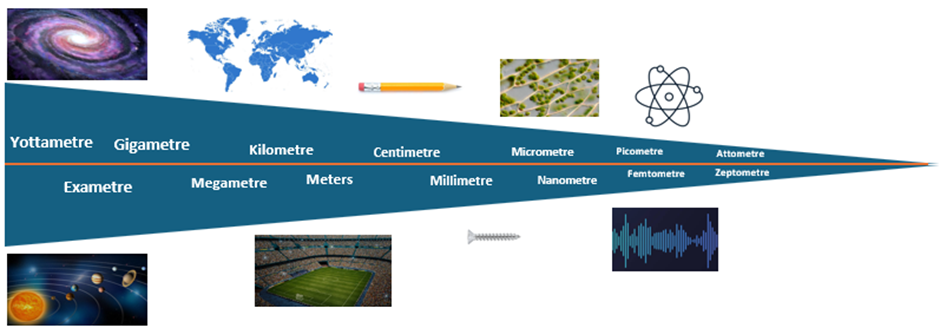The Precision Chronicles: A Journey Through the World of Metrology
In a world where precision is paramount, the story of metrology, the science of measurement, unfolds like an epic saga. From the ancient civilizations that first sought to quantify their surroundings, to the cutting-edge technologies shaping our future, metrology has been the silent force behind human progress.
The Dawn of Measurement
Our tale begins in the 3rd or 4th millennium BC, where the earliest systems of weights and measures emerged among the ancient Egyptians, Mesopotamians, and Indus Valley civilizations. These rudimentary methods were the precursors to a more standardized approach that would come much later.
The Evolution of Precision
Fast forward to the 18th century, and we witness a revolution in measurement. The industrial era demanded a common language of precision, leading to the creation of the metric system. It was during this period that the science of metrology began to take shape, defining fundamental units with ever-increasing accuracy.
Image on the right: The Rasmus Sørnes Clock

The Scale of Measurement
Below image outlines the scale of measurement of distance from the largest to the smallest units

Titans of Measurement
Among the key figures in our story is Richard Zsigmondy, an Austrian chemist who, in 1914, introduced the nanometer to measure the invisible particles seen through his ultramicroscope. His work laid the groundwork for the field of nanotechnology, forever changing how we interact with the microscopic world.
Richard Zsigmondy’s idea to introduce the nanometer as a unit of measurement was influenced by his extensive work with colloids and the need for a scale to measure the tiny particles involved in these substances.
Zsigmondy’s invention of the ultramicroscope in 1903, alongside Heinrich Siedentopf, was a pivotal moment in his career. This device allowed for the observation of particles that were smaller than the wavelength of light, which were previously invisible with traditional optical microscopes. With this new ability to see and measure such small particles, there was a clear need for a unit that could accurately represent their size.
The nanometer, being one billionth of a meter, provided the precision necessary for Zsigmondy’s work in characterizing the particles within colloids
Metrology : Science of Measurement
Metrology, the science of measurement, plays a pivotal role in the manufacturing industry, ensuring that products meet stringent quality and precision standards.
- In the aerospace sector, metrology is crucial for the construction of aircraft components, where even the slightest deviation from specified measurements can have significant safety implications.
- In the automotive industry, metrology tools like coordinate measuring machines (CMMs) are used to inspect car parts for wear and deformation over time, allowing manufacturers to maintain high levels of accuracy and extend the lifespan of their products.
- In the realm of electronics, manufacturers rely on metrology to calibrate machinery and tools before production, ensuring that the tiny components on integrated circuits fall within acceptable tolerances. This exacting level of precision is what allows for the miniaturization of devices and the advancement of technology.
- The use of metrology in manufacturing not only fosters innovation but also serves as the foundation for quality control, ensuring that products are reliable, safe, and meet the expectations of consumers and industry regulations alike.
Metrology in Manufacturing: The Unsung Heros & The Backbone of Industries
In the manufacturing industry, metrology is the unsung hero, ensuring that every component fits and functions flawlessly. From the aerospace sector to the electronics on your desk, precise measurement is the linchpin of quality and innovation.
Here’s a glimpse into the companies and equipment that keep the wheels of industry turning
Company Name
Metrology Products
Headquarters
Employees
Market Share
Industry Usage
Hexagon AB
CMMs, Vision Systems, Sensors
Stockholm, Sweden
21,000+
14%
Aerospace, Automotive
FARO Technologies
3D Measurement, Imaging
Lake Mary, FL, USA
1,500+
5.2%
Construction, Manufacturing
Nikon Metrology

Metrology Solutions, X-ray/CT Inspection
Tokyo, Japan
20,000+
4.5%
Electronics, Manufacturing
Carl Zeiss AG

Metrology Software, Microscopy
Oberkochen, Germany
34,000+
12%
Healthcare, Semiconductor
Renishaw plc
Precision Measurement, Process Control
Wotton-under-Edge, UK
4,500+
3.8%
Manufacturing, Healthcare
RSP2 is a dedicated lightweight probe for use on REVO systems, capable of 2D-scanning and 3D touch-trigger measurement. The RSP2 can be used with a number of styli with reach from 175 mm to 500mm.
A World Reshaped by Metrology
Metrology, the science of measurement, pops up in some surprising places in our daily lives. For instance, when you munch on your favourite chocolate bar, metrology is behind the scenes making sure each bite is just as delicious as the last. It’s used to measure the exact amount of cocoa and sugar, and even the thickness of the chocolate coating, so every bar is just perfect.


Or consider when you’re flying high in the sky; metrology ensures that all the airplane parts fit together flawlessly, keeping you safe while you’re cloud-hopping.
And when you’re at the hospital, metrology is super important for getting the dosage of your medicine spot on, because even a tiny bit too much or too little can make a big difference.




